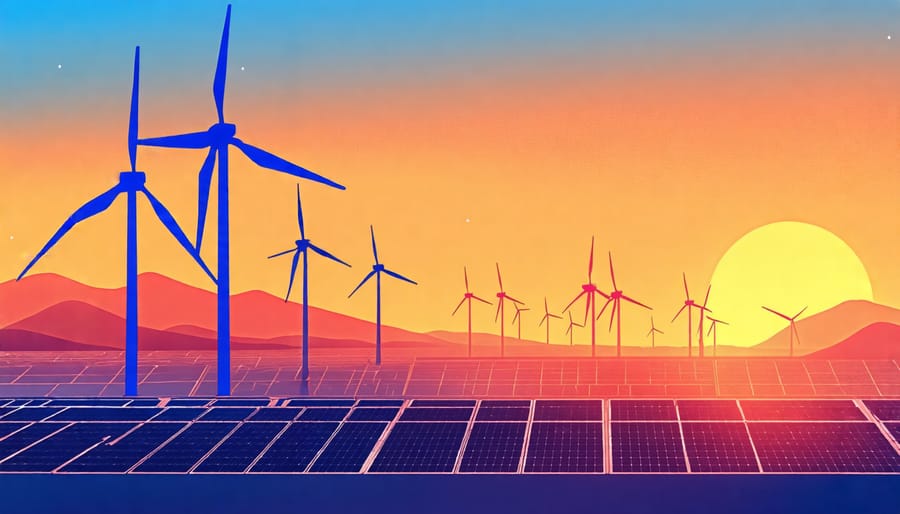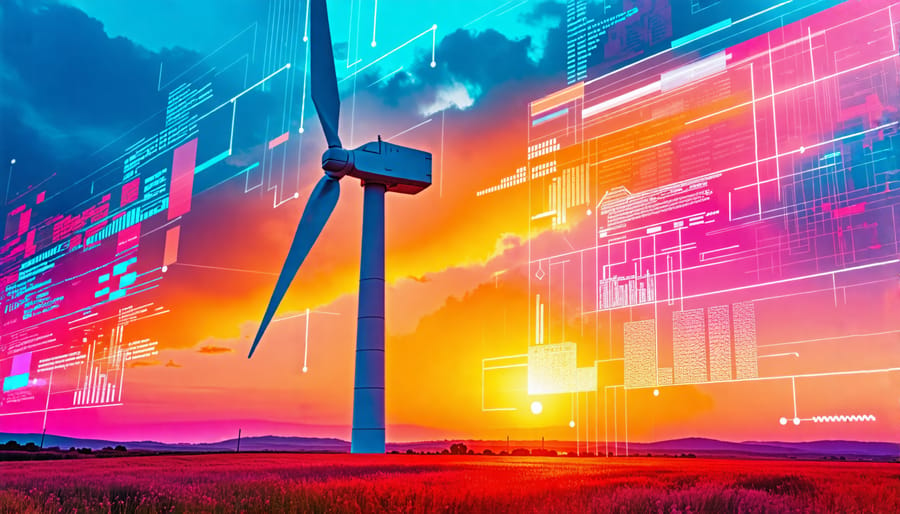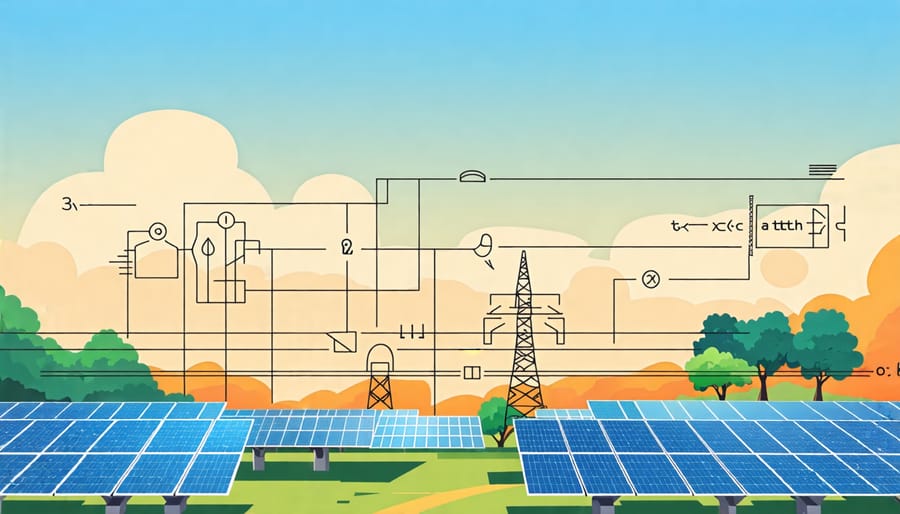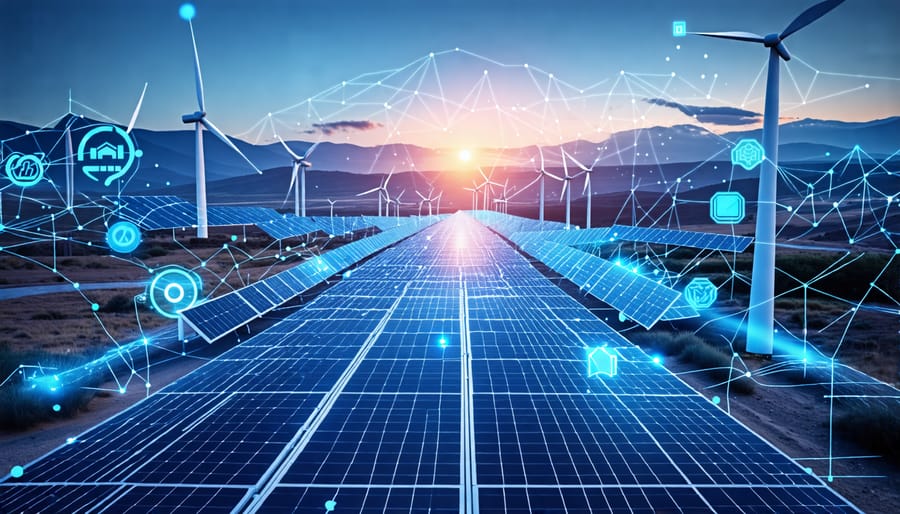Leverage AI algorithms to optimize energy output by integrating predictive analytics in wind and solar energy systems, enhancing efficiency and minimizing waste. Implement machine learning models to improve grid stability and demand forecasting, ensuring a seamless transition to a renewable-powered infrastructure. Utilize AI-driven tools for real-time monitoring and maintenance of renewable installations, reducing downtime and operational costs. Collaborate with AI experts to design smart systems that adapt to weather patterns and energy consumption habits, promoting sustainable and resilient energy solutions.
The Role of AI in Renewable Energy

Smart Grids and AI
Smart grids are revolutionizing how we manage energy systems, and artificial intelligence plays a vital role in their development. By integrating AI algorithms, smart grids can effectively optimize the distribution and consumption of energy from renewable sources like solar and wind. These grids leverage real-time data analytics to predict energy demand and supply fluctuations, making them a more reliable and sustainable solution for meeting energy needs.
AI’s capabilities in pattern recognition and machine learning enable smart grids to dynamically balance electricity loads. By predicting peaks and valleys in energy consumption, AI can instruct the grid to distribute electricity more efficiently, reducing waste and enhancing resilience. For instance, utility companies use AI to forecast weather changes and adjust the grid operations accordingly, ensuring a stable power supply even during extreme conditions.
Consider the example of Xcel Energy, a company that has successfully implemented AI-driven smart grids across the western United States. By using AI to process vast amounts of data from sensors and smart meters, Xcel has managed to cut operational costs significantly while simultaneously improving service reliability.
Furthermore, AI enhances demand response by enabling consumers to monitor their energy usage via smart appliances, fostering a more proactive approach to energy conservation. As renewable energy sources increasingly become part of the mainstream, AI-equipped smart grids are essential in ensuring these energies are harnessed effectively, showcasing a promising step towards a more sustainable future.
AI-Powered Predictive Maintenance
In the renewable energy sector, AI-powered predictive maintenance is rapidly transforming the efficiency and sustainability of wind and solar farms. By leveraging advanced algorithms and machine learning models, operators can anticipate equipment failures before they occur, thereby minimizing downtime and reducing maintenance costs. This proactive approach not only optimizes energy production but also extends the lifespan of critical components, such as wind turbines and solar panels.
A compelling example of this technology in action is found in Northern Germany, where a leading wind farm has integrated AI systems that analyze sensor data and weather conditions to predict turbine malfunctions. By doing so, they reduced unexpected downtime by 30%, significantly enhancing their output and profitability. Similarly, solar farms across California are deploying AI to monitor panel performance in real time, allowing technicians to address potential issues swiftly and efficiently.
These intelligent systems continue to evolve, offering even more granular insights with the help of expert input and continuous data improvement. As a result, renewable energy companies are not only cutting operational costs but are also contributing to a more sustainable future by ensuring a steady flow of clean energy. Indeed, AI in predictive maintenance marks a hopeful stride towards an era where renewables can viably meet global energy demands.
AI Innovations in Wind Energy
Optimizing Wind Turbine Efficiency
Artificial Intelligence (AI) is revolutionizing the renewable energy sector, particularly in optimizing wind turbine efficiency. By leveraging advanced AI algorithms, wind turbines can now predict and adapt to variable wind conditions, thereby maximizing energy production. This optimization starts with AI’s ability to analyze vast amounts of data from wind sensors and historical performance metrics. Through machine learning, these algorithms learn the optimal angles and speeds for turbine blades in various wind patterns, ensuring they capture the maximum energy possible.
For instance, companies like Siemens Gamesa have integrated AI systems into their operations, enabling real-time adjustments that enhance energy yield while minimizing mechanical stress. This not only boosts efficiency but also extends the lifespan of turbines—an essential factor in reducing maintenance costs and environmental impact. AI systems can detect potential faults before they escalate, allowing for preventive maintenance which further contributes to prolonged turbine life.
Moreover, AI in wind energy fosters smarter grid integration. By predicting energy output more accurately, AI helps in balancing supply and demand, thus enhancing grid stability. This predictive capability is particularly vital for regions heavily dependent on wind energy, where supply can be inconsistent.
Consider the practical implications of these advancements. In the Alta Wind Energy Center in California, AI-driven adjustments have led to increased annual energy output, showcasing the potential of these technologies. As AI algorithms continue to evolve, the future of wind energy looks promising, paving the way towards more sustainable and efficient power generation. For further insights into how AI is transforming this sector, explore AI in wind energy.

Case Study: AI in Real-World Wind Farms
In an inspiring example of artificial intelligence transforming renewable energy, a leading wind farm in Denmark deployed cutting-edge AI solutions to enhance its efficiency. By integrating AI algorithms with its operational systems, the farm achieved a significant leap in productivity and reliability. The AI system continuously analyzes data from sensors attached to the wind turbines, predicting maintenance needs and minimizing downtime. This proactive approach to wind turbine maintenance has extended the lifespan of the turbines and reduced costs significantly.
Additionally, AI’s ability to predict weather patterns allowed the farm to optimize energy production by aligning turbine operations with upcoming wind conditions. Notably, the AI tools facilitate seamless collaboration between human operators and technology, ensuring environmental integrity while maximizing output. This case underscores AI’s potential to revolutionize wind energy, offering a compelling model for other renewable sectors to emulate in pursuit of sustainable and efficient energy solutions.
AI Transforming Solar Energy

Enhancing Solar Panel Efficiency
Artificial intelligence (AI) is revolutionizing how we enhance solar panel efficiency, a critical endeavor in maximizing the potential of renewable energy. By employing machine learning algorithms, AI systems can predict weather patterns and solar radiation levels, allowing solar panels to optimize their positioning and energy capture throughout the day. This technology not only enhances energy output but also prolongs the lifespan of solar installations, making them more sustainable and cost-effective.
Furthermore, AI can perform predictive maintenance by analyzing real-time data from solar panels to identify faults or inefficiencies before they escalate into costly repairs. For instance, one solar farm in California utilized AI-driven analytics to detect and mitigate shadowing effects, a common issue that reduces panel efficacy, ultimately improving their energy yields by up to 20%.
AI also enables the integration of advanced Solar technologies, such as bifacial solar panels, which capture sunlight on both sides. By analyzing and responding to environmental variables, AI optimizes these panels’ energy production in varying conditions.
In an interview with Dr. Elena Perez, a leading expert in renewable energy technology, she highlighted the transformative impact of AI, noting, “AI allows us to harness solar power more efficiently than ever before, adapting to both predictable and unforeseen conditions, ensuring maximum output.” As AI continues to evolve, its role in enhancing solar energy efficiency represents a promising frontier in the pursuit of a more sustainable energy future.
Expert Interview: Future of AI in Solar Energy
In a conversation with Dr. Eleanor Chase, a renowned expert in AI and renewable energy, we explore the transformative role of artificial intelligence in the solar energy sector. Dr. Chase shares that one of the most promising advancements is the integration of AI-driven predictive analytics. These technologies enhance solar energy efficiency by accurately forecasting weather patterns and optimizing energy storage systems. “AI algorithms can now predict solar panel performance with unprecedented accuracy,” she explains, “which helps in maximizing energy output and minimizing operational costs.”
Further, AI is proving indispensable in the realm of solar grid management. By utilizing machine learning models, solar farms can now autonomously monitor and adjust their operations to maintain optimal power generation levels. This dynamic adaptability not only increases efficiency but also supports the seamless integration of solar power into existing energy grids.
Despite these promising developments, Dr. Chase acknowledges several challenges. “One of the primary hurdles is the need for substantial data to train AI models,” she notes. Additionally, the integration of AI systems requires significant investment and infrastructure upgrades, especially in developing regions.
As we stand at the crossroads of AI and solar innovation, Dr. Chase optimistically states, “With continuous advancements in AI, we’re on the cusp of a solar energy revolution that could significantly contribute to global sustainability efforts.”
Environmental Impacts of AI in Renewable Energy
Artificial intelligence (AI) is playing a transformative role in the renewable energy sector, presenting an optimistic avenue for reducing environmental impacts. By delivering sophisticated algorithms that can predict energy output, manage demand, and optimize resource distribution, AI is enhancing the efficiency and sustainability of renewable energy systems. For instance, AI technologies in solar energy help anticipate weather patterns to fine-tune energy production forecasts. This ensures that solar farms can prepare for sunny or cloudy days, maximizing energy capture and reducing waste.
Wind farms also benefit significantly, as AI algorithms predict wind speeds and adjust turbine settings accordingly, maximizing energy output while safeguarding equipment. This dynamic adaptability not only enhances efficiency but also extends the lifespan of turbines by minimizing mechanical stress, ultimately reducing the need for frequent replacements and conserving resources.
Moreover, real-time analytics provided by AI platforms empower grid operators to balance supply and demand more effectively. Energy storage systems, such as advanced batteries, are melded with AI to release stored solar or wind energy precisely when it’s needed, minimizing reliance on fossil fuels during peak demands. This integration contributes to a significant decrease in carbon emissions, making renewable energy more reliable and appealing for widespread adoption.
An enlightening case study from Denmark highlights how AI advancements have enabled the country to streamline its energy distribution network, leveraging renewable sources to meet substantial portions of national electricity needs. Such successes serve as an inspiring blueprint for countries worldwide aiming to enhance their renewable infrastructure and accelerate the transition to sustainable energy practices. AI’s integration with renewable energy is not just a technological synergy; it is a powerful catalyst for a cleaner and greener future.
Challenges and Future Directions
Integrating AI with renewable energy presents a range of exciting opportunities but also significant challenges. One of the main hurdles involves data acquisition and management. Renewable energy systems, such as solar panels and wind turbines, generate massive amounts of complex data that AI needs to process accurately. Ensuring data quality and addressing privacy concerns are crucial to harness AI’s full potential.
Additionally, the scalability of AI solutions is a major challenge. While AI can optimize operations and predict maintenance in small-scale projects, scaling these solutions to larger infrastructures requires overcoming technical and logistical barriers. There’s also a need for skilled professionals who can bridge the knowledge gap between AI and renewable energy sectors.
Looking ahead, collaborative efforts between AI developers, renewable energy experts, and policy-makers offer promising growth avenues. By fostering innovation and encouraging cross-sector education, we can streamline AI integration and enhance the efficiency of renewable energy systems. Continued research and practical demonstrations will contribute to overcoming current limitations and unlocking the transformative power of AI in driving sustainable energy solutions.
Conclusion
In conclusion, the integration of artificial intelligence in the renewable energy sector is transforming the landscape with remarkable progress. From optimizing energy production and distribution to predicting maintenance needs and enhancing grid management, AI is proving to be an indispensable tool. Real-life case studies, such as AI-driven solar power forecasting and intelligent wind turbine management, highlight tangible benefits and successful implementations. These examples underscore AI’s potential to revolutionize energy efficiency and sustainability. Expert interviews further reinforce the optimism, elucidating how AI is expected to address one of the most pressing global challenges: the transition to clean, reliable, and affordable energy. As technology advances, the relationship between AI and renewable energy is poised to deepen, opening avenues for innovation and collaboration. In this crucial juncture for environmental preservation, AI emerges not just as a catalyst but as an essential partner in paving the way toward a greener, more resilient future. The journey ahead is promising, with AI offering dynamic solutions for sustainable progress.





